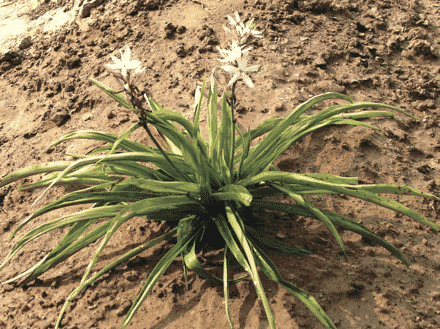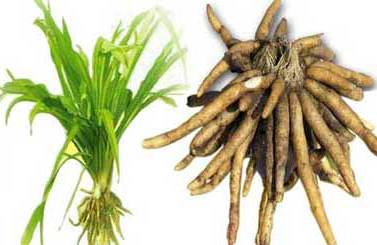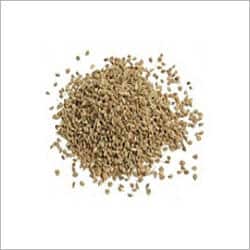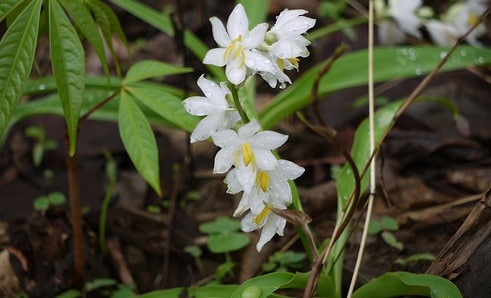Safed Musli Cultivation Guide:

Introduction of Safed Musli Cultivation:- Safed Musli (Chlorophytum borivilianum L.) is a medicinal tuberous root herbal plant, with small, usually white flowers, produced on sparse panicles up to 120 cm long. Basically this plant is found in forest areas. This plant has excellent ayurvedic properties. This can be grown throughout India and the botanical name of musli is “hlorophytum tuberosum”. This crop is perfect for commercial cultivation as it has very good demand in the market. The growing method of musli is very easy and anyone who has no experience of farming can go for it. Musli plant belongs to the family of “Asparagaceae” and genus of “Chlorophytum”. One can expect decent profits in commercial safed musli farming with good crop management practices.
Health Benefits of Safed Musli:- Usually this herb root is used in ayurvedic medicines and the following are some of the health benefits of safed Musli root.

- Safed musli used for therapeutic application in Ayurveda, Unani and Allopathic medicines.
- Safed musli used as a curative for physical weakness and many illnesses.
- Safed Musli is full of antioxidants and also vitamin C.
- Safed musli used as a curative for natal and post-natal problems.
- Safed musli used as an aphrodisiac agent and vitalizer.
- Safed Musli increases good HDL cholesterol and decreases bad or LDL cholesterol.
- Safed musli used as an effective alternative to The Indian Herbal Aphrodisiac.
- Safed musli used as an immunity-improving drug.
- Safed musli used as a remedy for diabetes.
- Safed musli used as a remedy for arthritis.
- Safed musli is also good for reducing stress and depression.
Note: However, there are many uses and health benefits, don’t take any herbal medicine without doctors advice.
Local Names of Safed Musli in India:- Safed Musli(Hindi), Musali (Sanskrit) Tiravanticam,Tannir Vittang (Tamil), Dravanti (Kannada), Safed musli (Marathi), Dholi musli(Gujarati), Sallogadda (Telugu), Shedeveli (Malayalam), Dravanti (Kannada).
Main Cultivated States Safed Musli in India:- Though it can be grown throughout India, Rajasthan, Gujarat and Madhya Pradesh are main production states of safed musli crop.
Safed Musli Varieties:- RC-5, RC-15, CTI-1,CTI-2 and CTI-17 are some hybrid commercial varieties available in India. Contact nearest horticulture/agriculture department for local suitable cultivar (Variety).
Climate Required for Safed Musli Cultivation:- Warm and humid climate is suitable for its cultivation. Sufficient moisture is needed during the vegetative and root growth period.
Soil Requirement for Safed Musli Cultivation:- Well, as the musli is a tuber crop, it requires sandy loam soils rich in organic matter for quality roots and better yield. Soil should have proper drainage to drain out any excess water. If you are planning for large scale or commercial cultivation of musli, soil test needs to be carried out to find out the soil health and it provides the opportunity to supplement the soil with deficient micro-nutrients. Heavy block cotton soils are not suitable of musli cultivation.
Season for Safed Musli Cultivation:– Usually, safed musli tubers are planted in raised beds in the month of June-August or before monsoon starts.
Land Preparation in Safed Musli Cultivation:- To get better pulverization of the soil, give 3 or 4 deep ploughings and tillering in the month of May just a head of monsoon. Make sure to the soil to fine tilth stage. Remove any weeds from previously cultivated crops. To make the soil rich in organic matter, apply well decomposed cow dung along with other green manures. Like any tuberous crops, Musli is better grown on raised beds. As part of the land preparation, raised beds should be prepared by keeping the distance of 24 inches and 12 inches of height to prevent water logging and for the proper development of the tubers. Make sure to irrigate the raised beds well before plantation. It is better to prepare raised beds along the slope of the land for proper drainage. Make sure to place drip-lines at the middle of each of the raised beds.
Propagation, Seed Rate and Sowing in Safed Musli Cultivation:- The crop is propagated by tubers or fingers (seeds) of Musli. While selecting the seeds, care should be taken and try to get these seeds from well known sources. Generally, good seeds will have disc or crown with them. Tuber’s epidermal layer should not be damaged. The seed rate depends on the cultivar and approximately 400 to 450 kg of seed is required to cover 1 acre crop. This is about having 30,000 to 35,000 fingers in one acre. Treating the seeds before sowing should be carried for better pest and disease resistance and yield. Musli seeds should be treated with Humicil @ 5ml/Liter of water and Dithane-M 45 @ 5grams/Liter of water. Seed spacing can be 10 in x 12 in.
While sowing, make sure to have the crown is at the top side of the tuber and other non-crown part at the down side and tuber should be in slanting position. The seed should be sown half inch depth in the soil.

Manures and Fertilizers in Safed Musli Cultivation:- Musli crop responds very well to manures and fertilizers. Well-decomposed organic matter of cow dung can be applied in the soil during land preparation. The quantity of cow-dung should be 20 to 25 tonnes per 1 hectare land or 5 to 6 trolleys of cow-dung manure per acre should be applied.. Apart from cow-dung, green manures like Sesbania, Crotalaria or Jammu and Pilli Pesara can be applied. Musli requires bone meal as well to full fill the requirement of phosphorus and the necessary micro-nutrients.
Irrigation in Safed Musli Cultivation:- Musli requires constant moisture in the soil throughout its growth period and even after the stage of fall of leaves. Irrigation period depends on the soil capacity moisture holding and climatic conditions. As it mostly grown as rainy season crop, it does not require irrigation during the rainy season. However, water-logging should be avoided by providing proper drainage. In case of water problem and to use the water effectively at root system, one can opt out for drip irrigation. Usually, in dry spell, irrigation can be carried out at 2 week interval.

Intercropping in Safed Musli Cultivation:- Teak, neem, mango, papaya and banana orchards can have musli as intercrop to get some extra income.
Intercultural Operations in Safed Musli Cultivation:- The first 3 months period from the sowing is very important and the crop needs up-most care..Apply post-emergence weedicide 1 week after emergence of weeds and two weeds of the crop are required to free it from the weeds which should be controlled manually. Any kind of deficiency should be immediately traced and the required content should be supplied.
Pests and Diseases in Safed Musli Cultivation:- The following are the common pests and diseases found in Safed Musli cultivation.
Major pests found in safed musli cultivation are:- White grub and leaf eating caterpillars.
- Control Measures: For white grub, apply Aldrin @ 25 kg/ha at the time of last ploughing during field preparation. To control the leaf eating caterpillar, spray 0.2 % metacid aqueous solution at fortnightly intervals.
Major diseases found in safed musli cultivation are: Red spot and leaf blight.
- Control measures: Spray Bavistin solution @ 1 gram/liter of water at 25 days interval (2 times) to control the Red spot and leaf blight.
Harvesting in Safed Musli Cultivation:- The safed musli crop will be ready for harvesting after 3 months of sowing. Generally maturity of the crop can be identified by drying up and falling leaves. After the leaf fall, the tubers should continue to be in the ground and they should not be plucked as the tube colour start changing and this will give more value. At the time of the leaf fall, the tubers are light in colour and, as they mature by time, they turn into deep black colour.
Post Harvesting in Safed Musli Cultivation:- Post harvesting tasks include; cleaning tuber, peeling, drying and packing in poly bags.
Yield in Safed Musli Cultivation:- Yield depends on many factors like cultivar selected, soil type, irrigation, climate and farm management practices. In safed musli cultivation, on an average, 2 tonnes (2,000 kg) of fleshy roots/ha can be obtained, which may yield up to 350 to 400 kg of dry safed musli.
Profits in Safed Musli Cultivation:- Rs.1.50 to.2.50 lac/Acre/Year.
For Sheep and Goat Farming in India : Read here.
For Asia Farming: Read here.
I want to grow safed musli, I have land in himachal pradesh, I want to know everything about it.
And from where I can’t purchase good quality seeds.
Would like clarity on the yield numbers. The blog mentions 2 tons of fleshy roots, and 350kg of dry roots per hectare. Is this for one crop of three months? Or is it for four crops over a year?
Thanks, regards
For Year.
610 Sq Yards out skits of Vizag and planning for neem plantation please advice.
Thanks,
Navdeep
I like to cultivate white Misli in 5Acers initially, in Nellore District of Andhrapradesh. Any one can Advise and Guide me.
I am planning to cultivate safed musli around 5 acers. what is the market price for dried musli
I want to cultivate safed musli in eastern UP..
Could I can cultivate there …
I have agriculture land , please provide details regarding farming of safed musli
From Where I buy seed seed?
rates of seed plz
Can white musli plants be cultivated in black cotton soil, where we use to cultivate Sugarcane?